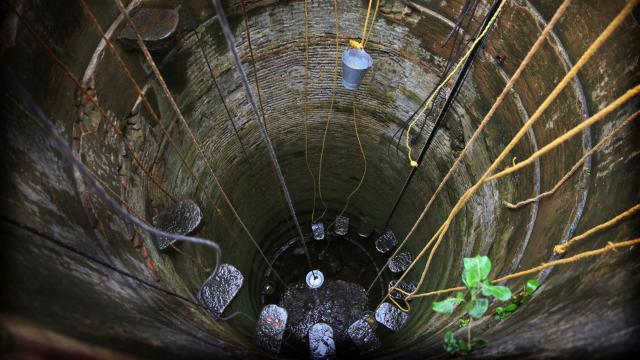When Chennai, India’s main reservoir disappeared earlier this summer, the world was rightfully shocked. A city of more than 4.6 million people had lost its main sources of drinking water, forcing authorities to rely on water shipped in by train.
But Chennai’s plight is part of a much bigger issue: The world is increasingly water-stressed as water demand outstrips supply and groundwater is disappearing at an alarming rate. Nearly 1.8 billion people, almost a quarter of the global population, live in countries that are extremely water-stressed, according to a new report by World Resources Institute ranking the world’s most water-stressed countries and regions.
The results are a warning, but the report authors also note that the solutions to our broken-arse water system are right in front of us. We just need to implement them before we drain our reservoirs and suck aquifers dry.
The idea of water stress goes beyond just how much rain fell in a given year. Instead, the team used a mix of data on water regulations, how water systems are structured, and a number of environmental factors, from rainfall variability to groundwater depletion rates, to come up with its water-stress rankings.
All told, the researchers used 13 indicators to create their rankings. The new report is an update to WRI’s Aqueduct Water Risk Atlas, a map-based tool that lets users visualise just how screwed different locations are by water stress.
The results show that the Middle East is home to eight of the 10 most water-stressed countries in the world. There are 17 countries with “extremely high” water stress, including two more Middle Eastern countries as well as India. An additional 27 countries have high water stress, and the ranks include a number of European countries, showing this is a global issue. Adding the whole group of 44 countries together means that 2.6 billion people are living in regions where water is becoming a precious commodity.
Within countries with relatively lower water stress, there are also hot spots. The U.S., for example, has 10 states with high or extreme water stress (New Mexico has it the worst, followed by California). And as we saw last year in Cape Town, South Africa, which approached a Day Zero where water ran out, individual cities can also feel the pinch.
“We’re likely to see more of these kinds of Day Zeroes in the future with major, growing cities and water stress,” Betsy Otto, the director of WRI’s Global Water Program, said during a press call.
The problems facing our water systems are manifold. Climate change means that in some locations, extreme drought is increasingly likely to be followed by extreme rainfall. In some places like around the Mediterranean, scientists expect less rain to fall, period. Leaky pipes and overusing water for agriculture or energy ensure water gets wasted while tapping groundwater supplies with aplomb means drawing down a very finite resource.
“Beneath our feet, there’s a groundwater crisis we’re not even seeing,” Otto said. “Our underground savings accounts of water are being rapidly overdrawn.”
But if those are the problems, then there are also obvious solutions we can return to. On the climate change and weather whiplash front, water managers can design reservoir systems and water use plans that conserve enough water in dry years and capture the runoff in wet years. Setting aside money to fix leaky, lead-infested pipes could also offer another major avenue to conserve water.
Water overuse is something that can also be overcome by improving crop and soil management practices or citing energy infrastructure in places with less water stress. Some of the solutions will require creativity and political will, but striving for them is better than the thirsty alternative.
